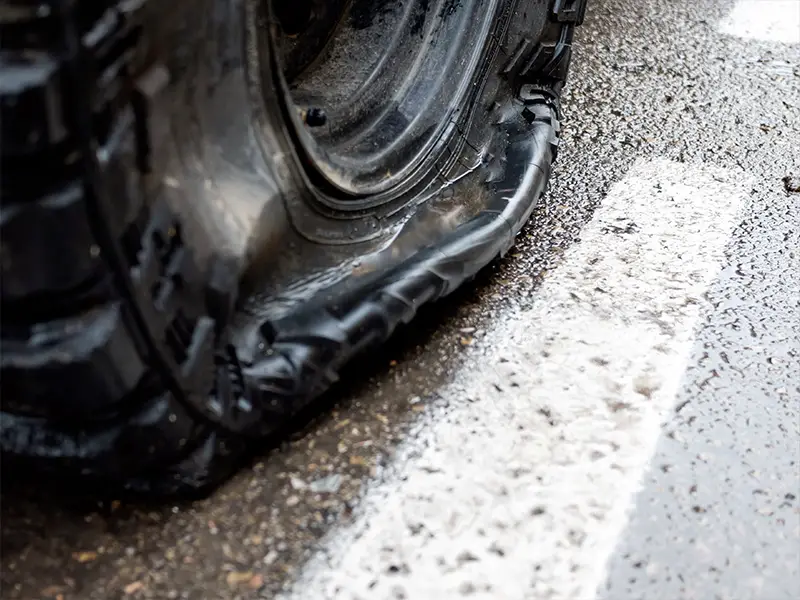Are you tired of having to refill your tires every other day? If your tire keeps losing air every few days, it can be frustrating and a waste of time.
Tire Keeps Losing Air Every Few Days
There are many ways a tire could develop a slow leak:
- Small Puncture
- Leaky Valve Stem
- Temperature Change
- Bad Tire Bead Seal
- Failed Patch
- Tire Age
In this article, we’ll look at what could be causing your tire to lose air, how to identify the problem, and what you can do to fix it.
Let’s take a closer look.
Why Is My Tire Losing Air Overnight?
There are a few common reasons that can cause tires to lose air pressure slowly over a single night or several days:
Small Puncture
The most common reason a tire loses air slowly is a puncture or a small hole in the tire. This can happen from driving over sharp objects like nails, screws, or glass. Tiny punctures can be extremely difficult to notice. Especially ones that leak air so slowly that it takes all night to lose enough tire pressure to be noticeable.
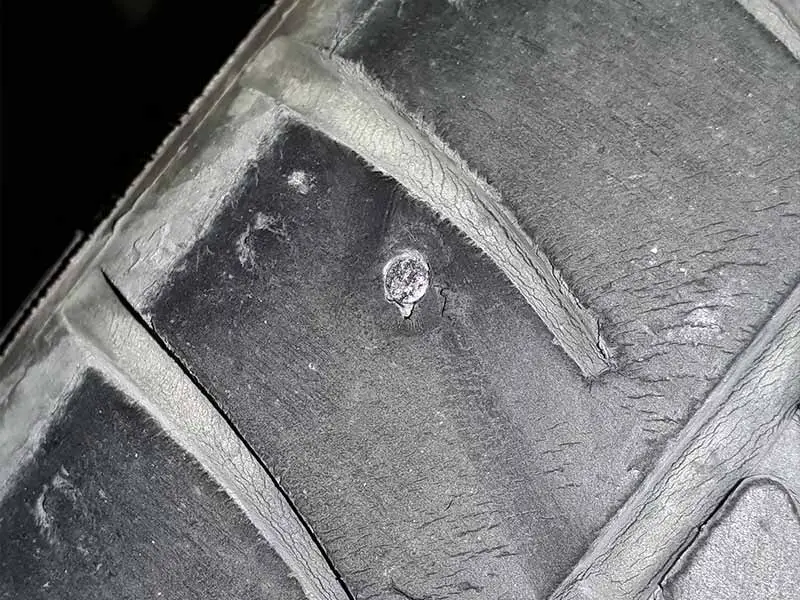
Leaky Valve Stems
Another reason for tire air loss is a faulty valve stem. The valve stem is the small metal part on the rim that sticks out and is used to fill the tire with air. If the stem is damaged, it can let air escape and cause the tire to go flat. You can check the valve stem by removing the cap and seeing if any air is coming out.
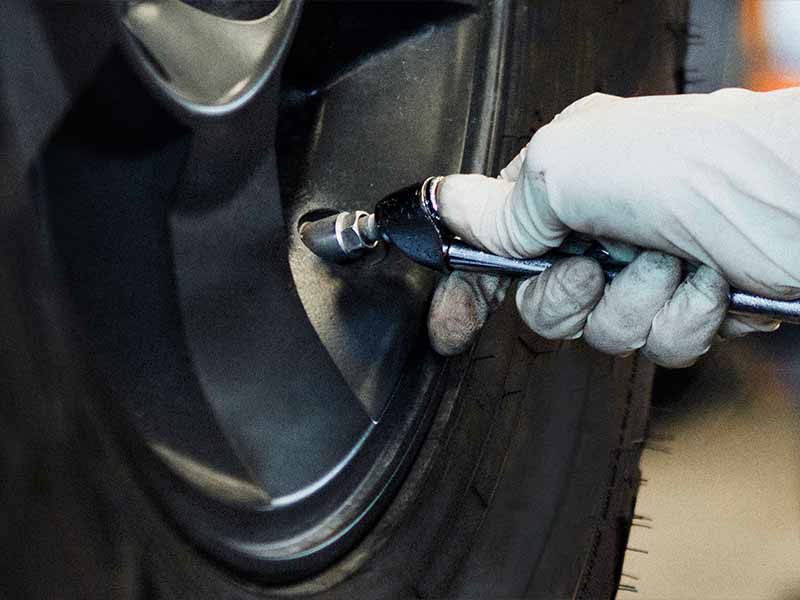
Temperature Change
Temperature changes can also affect tire pressure as tires expand and contract with the temperature. If you’ve noticed a significant temperature change or recently experienced extreme hot or cold weather, this could cause your tire’s air loss.
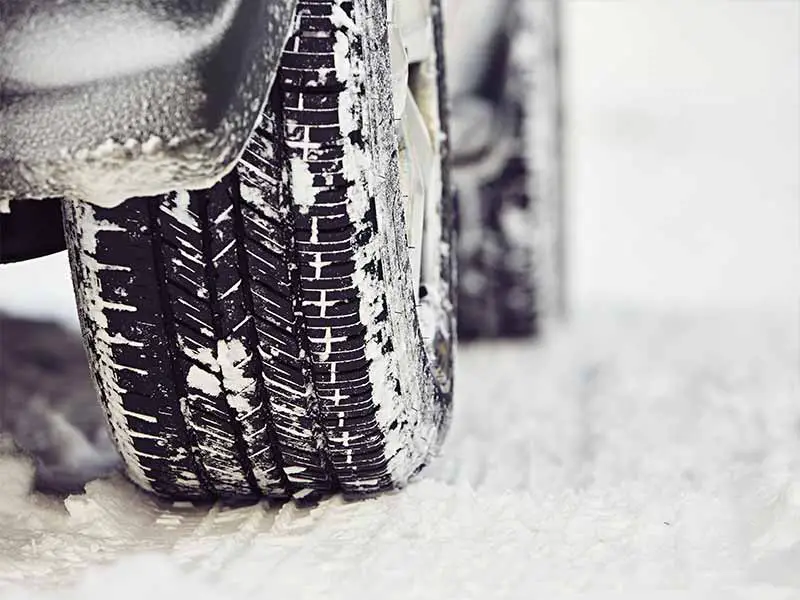
Tire Bead Seal
A poor tire bead seal is another way air leaks out of your tires. This is more common with a brand-new tire losing air pressure. A tire bead leak isn’t likely to occur unless the tire wasn’t mounted correctly, there is a defect with the tire bead, or a damaged wheel makes it difficult for the bead to maintain a proper seal against the rim.
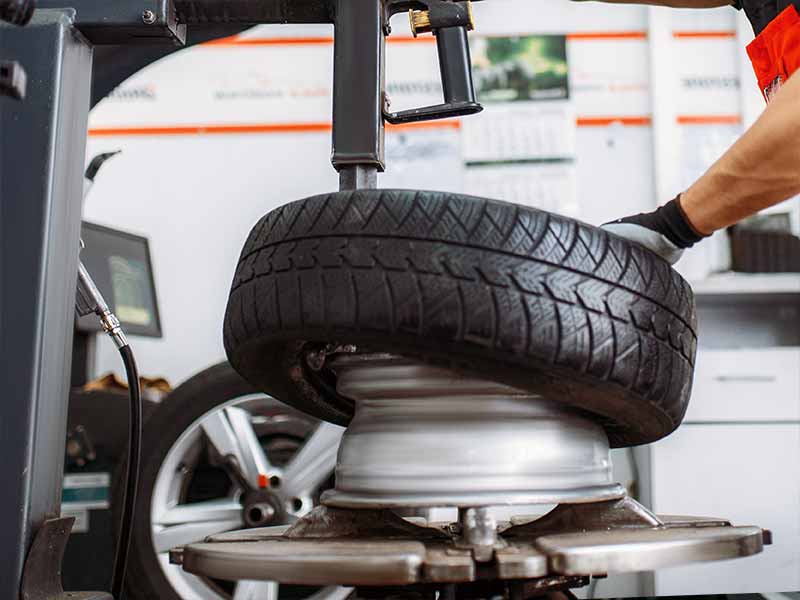
Wheel Corrosion
If you drive in areas with lots of salt on the roads in the winter, that can cause the metal of your wheels to corrode over time. If there’s corrosion on the wheel, it can create rough spots or bumps that prevent the bead from sealing tightly against the rim. Also, if you don’t clean your wheels regularly, dirt and grime can build up and trap moisture against the metal, which can also contribute to corrosion.
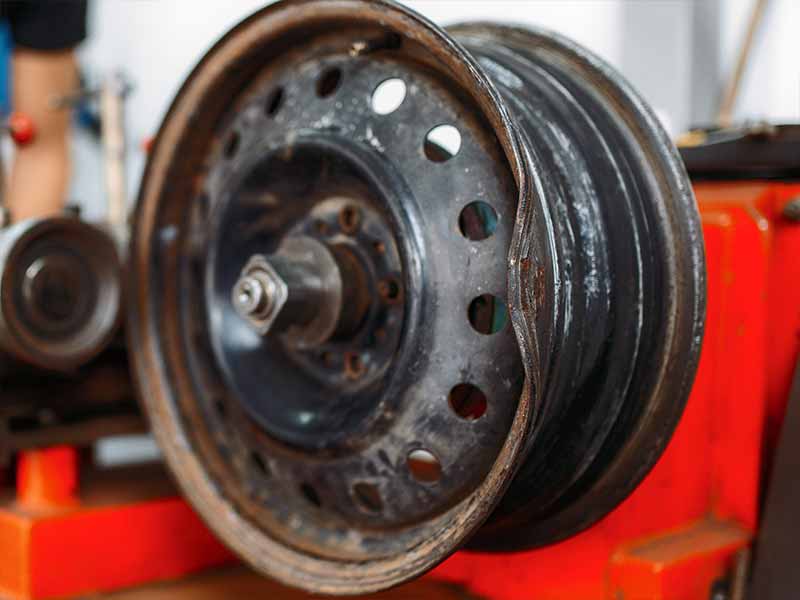
Failed Patch
Tire patches could develop an air leak if they weren’t properly applied or placed too close to the tire’s sidewall. This can also happen if the area around the puncture wasn’t cleaned properly before applied or the glue wasn’t strong enough. If the patch wasn’t stuck to the tire evenly or centered over the hole, it’s much more likely to come off.
Another reason a patch can fail is if the hole is too big. If the hole is too big, the patch won’t be able to hold the air in the tire and will eventually come off. Patches are meant for small holes or punctures and are not meant to be a permanent fix for larger holes.
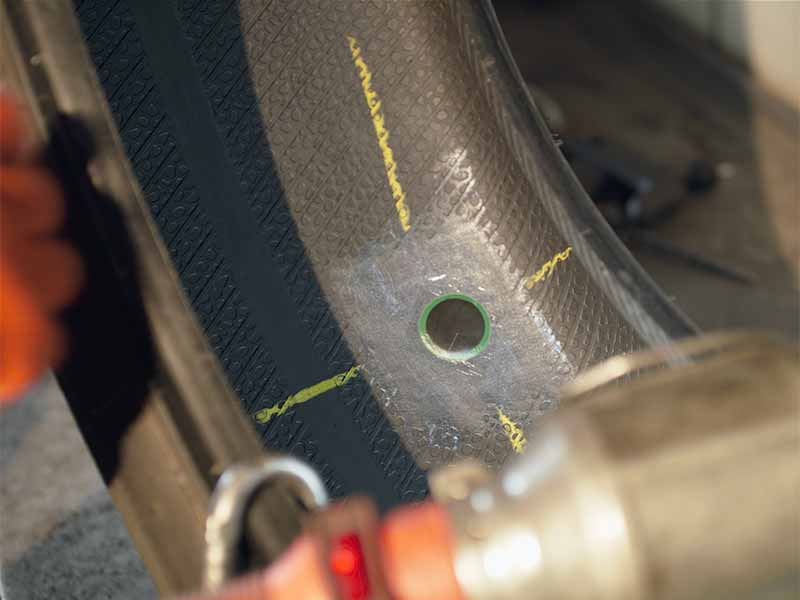
Tire Age
Lastly, if the tire is worn or aging, it can start to develop cracks as the rubber weakens, which can lead to air loss. If you’ve had the tire for six or seven years, or if it has a lot of miles on it, it might be time for a replacement.
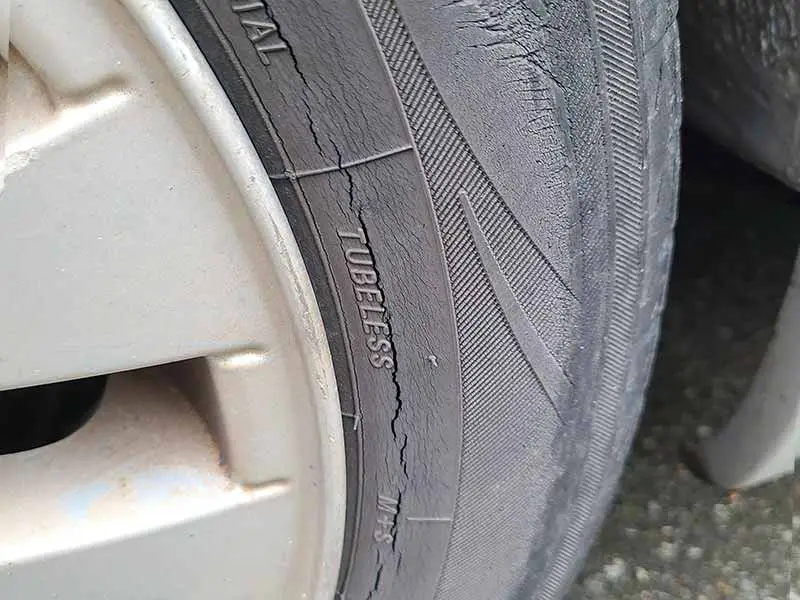
How To Find A Slow Leak In A Tire
Finding the site of a slow air leak can be difficult. But knowing where to look and what to look for can help find the source of the leak and potentially fix it before you need a new tire.
Use Soapy Water
One of the most effective ways to find a slow leak is to use soapy water. Mix dish soap with water and spray it all over the tire. If you see any bubbles forming, that’s a sign that air is escaping from the tire and you’ve found the source of the leak.
Check The Valve Stem
Another common cause of slow leaks is a damaged valve stem. Check the valve stem for any cracks or signs of damage. If you find any, replace the valve stem.
Many things, including corrosion, damage, or general wear and tear, can cause a leaky valve stem. Try listening for a hissing sound at the stem, or use a spray bottle to soak it with a soap and water mixture to look for bubbles.
You can try replacing it with a new valve core if you find that the stem isn’t holding air. However, you may need to have the entire valve stem replaced.
Check The Bead Seal
A loose bead can also cause a slow leak. To check the bead, inflate the tire to its recommended pressure and look for any areas where it isn’t touching the rim. Look for any cracks or breaks in the bead area, as these are common spots for leaks. You can also spray soapy water around the lip of the rims.
Be sure to check where both sidewalls of the tire meet the rim and form a seal with the wheel. You may need to remove the wheel from the hub to inspect the inner side of the wheel properly.
How To Fix A Slow Leak In A Tire
There are a few different methods of tire repair to consider:
Tire Sealant
One of the easiest ways to fix a slow leak is to use a tire sealant, a liquid you inject into the tire through the valve stem. This seals any small punctures and should keep your tire inflated for a while. Just be aware that it may not be a permanent fix, and you should still get the tire inspected by a professional as soon as possible.

Tire Sealant
Plug Kit
Using a plug kit to plug the leak is another potential method that is also temporary. Tire plugs require reaming out the site of a puncture and sealing the opening with a piece of rubber and usually a bit of rubber cement to help hold it in place.

Tire Plug Kit
Tire Patch
Another option is to patch the tire from the inside. This involves removing the tire from the rim, finding the leak, and applying a patch to the inside of the tire. This is a more permanent solution, but it can be a bit more involved and requires removing the tire from the rim.

Tire Patch Kit
New Tires
Finally, if the tire is beyond repair, you’ll need to replace it. Don’t drive on a tire that’s losing air, as it can be dangerous. Also, we recommend replacing tires in pairs and always putting new tires on the rear.
Make sure to get a leaky tire repaired or replaced as soon as possible to keep yourself and others on the road safe.
Why Do Tires Lose Air Over Time?
All tires drop in pressure over long periods of time due to natural air pressure seepage through the rubber. This is why it’s important to regularly check your tire pressure, especially during drastic temperature changes, as tires tend to lose air more quickly in the colder months.
Resources
Below are some links you may find helpful when learning about tires
- Why your tire loses air slowly and how to fix it – United Tires
- How to deal with a tire leak you can’t find – NAPA
Final Thoughts
If your tire keeps losing air every few days, it can be frustrating and potentially dangerous. But the good news is that there are a few common culprits, such as a puncture, a faulty valve stem, or a damaged tire bead, that can be easily fixed.
Make sure to regularly check your tire pressure and inspect your tires for any signs of damage. If you’re still having trouble, take your vehicle to a professional tire technician for an inspection.
By addressing the issue quickly, you can ensure that your tires are safe, properly inflated, and ready to hit the road whenever necessary.
Good luck and happy motoring.
